

Petroac, a leading energy services company, has celebrated the awarding of a significant deal with Saipem to support the decommissioning of a platform offshore the United Kingdom.
Under the terms of the multi-million-pound contract, the companies will work as an integrated team to remove the 20,000 tonne topside using the Saipem 7000, a large semi-submersible heavy lifting vessel.
Nick Shorten, COO of Petrofac’s Asset Solutions business, remarked, “As our sector pursues cleaner sources of energy, decommissioning is a key enabler for the transition. Supporting Saipem and their customer, we look forward to leveraging our knowledge of North Sea operations and service provision, and 20 years of decommissioning experience to deliver a safe and predictable programme that can serve as a case study for the North Sea’s transition.”
Petrofac will execute the three-year project over two phases. The first will include preparations onboard the platform, the second will be on the Sapiem 7000 for the removal campaign. The scope of Petrofac’s contract includes the module separation, lift point inspection, lift point installation, riser and caisson severing.
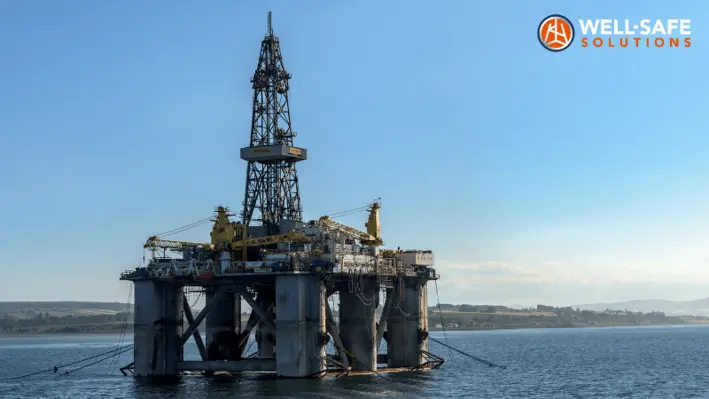
 Well-Safe Solutions has appointed Alexa Duncan as the company’s first Energy Transition Manager as it looks to add carbon capture and storage (CCUS) and geothermal project capabilities to its offering.
Well-Safe Solutions has appointed Alexa Duncan as the company’s first Energy Transition Manager as it looks to add carbon capture and storage (CCUS) and geothermal project capabilities to its offering.
Duncan has more than a decade and a half of experience under her belt in project management and well engineering for international operators, and will play a pivotal role in the delivery of these energy transition business streams.
Duncan said, “Well-Safe Solutions is at the forefront of the well plug and abandonment industry and working closely with clients to reduce their carbon footprint. With the North Sea Transition Authority (NSTA) estimating CO2 storage capacity of 78 billion tonnes on the UK continental shelf alone, there is a clear opportunity for Well-Safe Solutions to apply its considerable expertise when assisting our clients on the journey to net zero carbon emission.
“In addition, extensive growth is also predicted within the geothermal market. I’m passionate about the energy transition and very much looking forward to collaborating with our highly experienced well engineering and subsurface teams on upcoming projects internationally.”
James Richards, Well Abandonment Director at Well-Safe Solutions, added, “Recruiting a professional of Alexa’s calibre to our team is a clear endorsement of our ambition n in this sector. Our own market research and client feedback indicates an opportunity for us to apply the lessons and collaborative working practices we deliver in well plug and abandonment to these fields.”
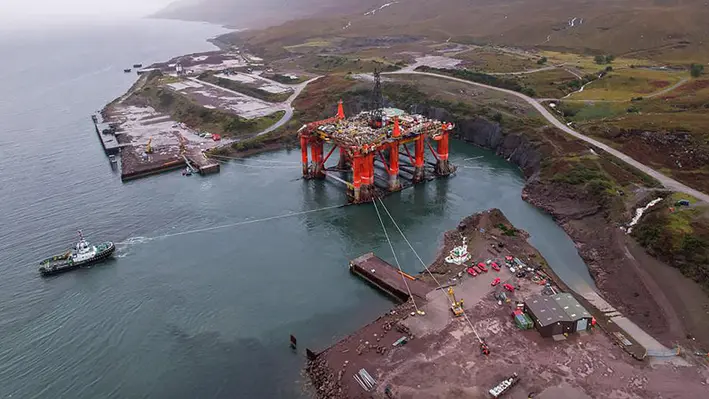

The long-serving Northern Producer FPSO, which has spent the last fifteen years at EnQuest’s Dons field in the North Sea, has arrived at Kishorn Port in Scotland for decommissioning.
As per an announcement made on social media, the FPSO has been welcomed at Kishorn Port where preparations are beginning for the decommissioning, recycling and possible re-use of the 12,500 Gt vessel.
Kishorn Port Ltd. thanked the teams of KPL, Ferguson Transport & Shipping, the shore-based marine services team, Green Marine, Jifmar Scotland, Shearwater Marine Services, Ross-shire Diving Services, Chisholm's Recovery Specialists, Interocean Marine Services and its client Northern Offshore Ltd.
The company expressed its delight at landing the contract and finally receiving the vessel for end-of-life operations. It stated that it believes it will be the first time work of this nature has been carried out in a dry dock, with a semi-submersible FPV, as well as being a first for KPL and Kishorn Port under the EU recycling license.
The future decommissioning, demolition and recycling of the Northern Producer will be carried out by lead contractor Liberty Industrial working with KPL and its partners.
Following its arrival, the dock gates would be going back in and sealed before the dock is pumped dry. Survey work will follow once high and dry and necessary steps in its EU Licensing process will follow, working closely with SEPA, HSE the asset owner.
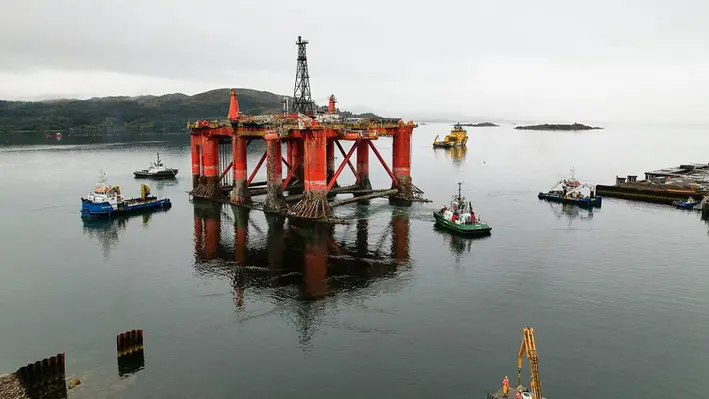
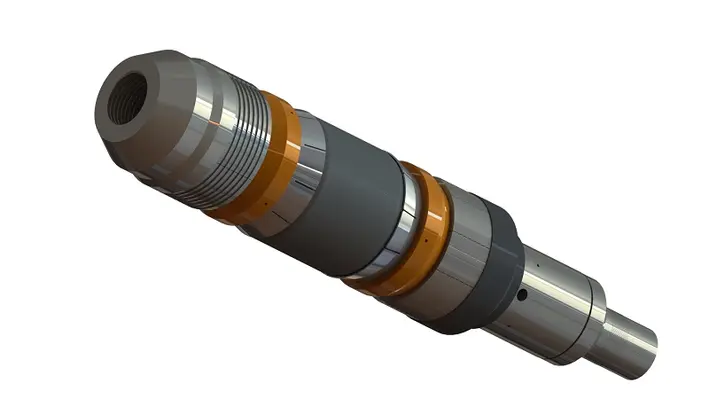

The CX-2 bridge plug, a solid and tested base for cement plugs designers to deliver enhanced efficiency and reliability, has been successfully deployed for the 1,000th time by Coretrax, a global leader in oil and gas well integrity and production optimisation.
The milestone was achieved for a project in the North Sea, with Coretrax revealing the CX-2 has now been deployed for more than 40 customers across 12 regions since its initial launch in 2012.
The CX-2 permanent cast iron bridge plug is constructed of drillable materials and features a built-in setting mechanism. It is set with both hydraulic pressure and mechanical pull and has an innovative release system, with a slim outer diameter (OD), a large inner diameter (ID). This allows cementing operations to be completed as part of the one trip system whilst minimising cement disturbance, ultimately eliminating the need for a dedicated cementing trip and further reducing rig time.
According to Coretrax, the solution has saved an average of three hours per run and so far delivered 3,000 hours of rig time savings for operators.
John Fraser, Coretrax CEO, remarked, “Coretrax has a long history and proven track record in the UKCS, so it is fitting that we achieved this milestone deployment in the North Sea. Our CX-2 bridge plug is a staple in our portfolio and has built an unrivalled reputation for delivering cost and time efficiencies in P&A operations.
“As the decommissioning sector continues to ramp up, our innovative technology combined with our experienced personnel allows us to remain at the forefront of well abandonment and able to tackle to most complex well challenges, while delivering greater efficiencies.”
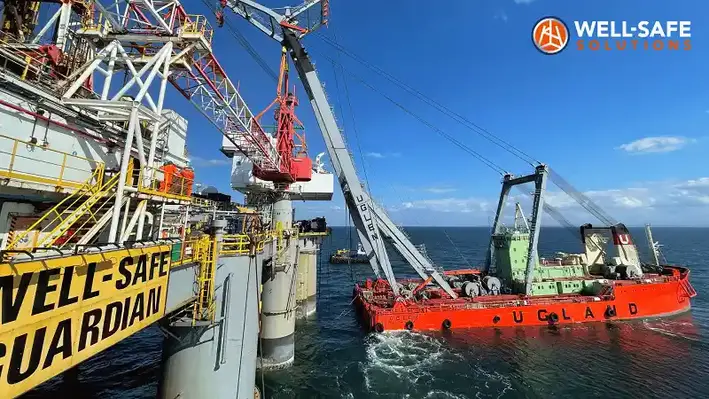

Well-Safe Solutions, a well plug and abandonment specialist, has strengthened its commercial team by hiring Paul Simpson as Business Development Manager in a bid to continue its international growth strategy.
Simpson has more than 25 years’ experience in global well intervention management and business development, including time spent as part of a multi-skilled well abandonment team tasked with delivering the safe abandonment of bp’s North West Hutton project in the North Sea.
Simpson remarked, “I’ve watched with interest the continuing growth of Well-Safe Solutions over the past few years, with the creation of Well-Safe Solutions and the Well-Safe Resources service line underlining the company’s continued expansion this year.
“Throughout my career, I’ve prided myself on successfully integrating service lines to boost efficiency and answer specific challenges facing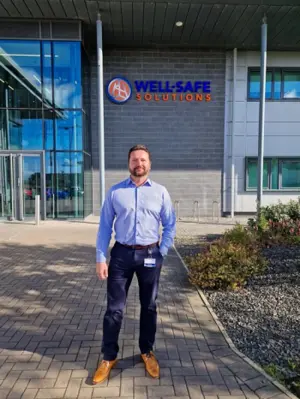 clients, building mutually-beneficial relationships in the process.
clients, building mutually-beneficial relationships in the process.
“I’m looking forward to contributing to the company’s continued growth as we target clients across the land and offshore well decommissioning markets in a number of geographies worldwide.”
Chris Hay, Director of Strategy and Commercial, commented, “I’m delighted to welcome someone of Paul’s calibre to Well-Safe. Paul’s arrival comes at an exciting time for the business, as we continue the implementation of our international growth strategy as well as strengthening our position in the North Sea market.
“Building on his considerable experience and skills in client management, Paul will work closely with our customer base to identify new opportunities and develop solutions for safe and efficient well decommissioning.”
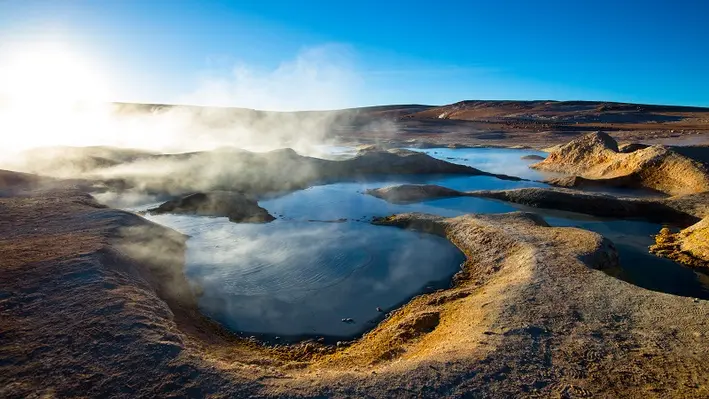
 Getech, a world-leading locator of subsurface resources, has completed a geothermal study for Angus Energy, outlining significant potential in a UK development.
Getech, a world-leading locator of subsurface resources, has completed a geothermal study for Angus Energy, outlining significant potential in a UK development.
Angus Energy is committed to utilising its oil and gas drilling and engineering expertise to develop geothermal energy projects. To achieve this, the company enlisted Getech’s subsurface proficiency to locate and access promising areas for geothermal energy production in southwest England.
Getech delivered an in-depth geoscientific interpretation that included structural mapping, depth estimation and heat flow analysis. The assessment enables Angus Energy to make informed decisions regarding future development projects.
Richard Bennet, Acting Ceo AT Getech, said, “Given the drive for new was to decarbonise operations and provide consistent heat and power, investment in alternative energy sources such as geothermal is ramping up. Getech’s subsurface and geoscience expertise is helping Angus Energy take an important step toward developing sustainable energy solutions that bolster the UK’s energy security and advance decarbonisation efforts.”
Richard Herbert, CEO of Angus Energy, commented, “We are pleased to have made good progress in bringing some of our traditional skills and focus on subsurface assessment out of the world of hydrocarbons into that of alternative energies. We are grateful to Getech for their professionalism which will assist in de-risking future geothermal drilling programmes by all players in this developing sector.”
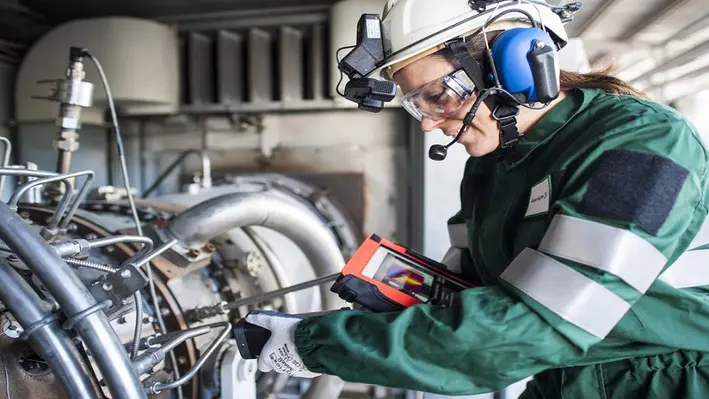
 Baker Hughes has been awarded two contracts from Vår Energi in order to expand its regional presence in the North Sea for exploration logging, well intervention technology and subsea production systems.
Baker Hughes has been awarded two contracts from Vår Energi in order to expand its regional presence in the North Sea for exploration logging, well intervention technology and subsea production systems.
The first contract is a nine-year engagement that will utilise Baker Hughes’ well intervention capabilities gained through the acquisition of Altus Intervention back in April.
Alongside the intervention scope, Baker Hughes will supply all exploration logging solutions to help Vår Energi further develop its prospects on the Norwegian Shelf. The contract allows for a seamless integration of Baker Hughes’ technologies into the wider operations of Vår Energi, enabling a powerful impact of its efforts to reduce carbon emissions.
The second contract is for the delivery of a bespoke Balder field vertical tree system, a Baker Hughes’ specialist technology suitable for the complexities of this field. The agreement will span 15 years, and includes the support for existing Balder legacy wells and future developments in the Balder area.
Maria Claudia Borras, Executive Vice President, Oilfield Services & Equipment at Baker Hughes, said, “Baker Hughes has an extensive and successful history of creating value for customers in Norway and the North Sea. The two long-term contract awards from Vår Energi enable us to deploy our superior portfolio not only in well intervention, but also in exploration logging and subsea production.
“Combining our technology, our exceptional regional expertise, and our dedication to a world-class customer experience ensures successful outcomes for both companies.”
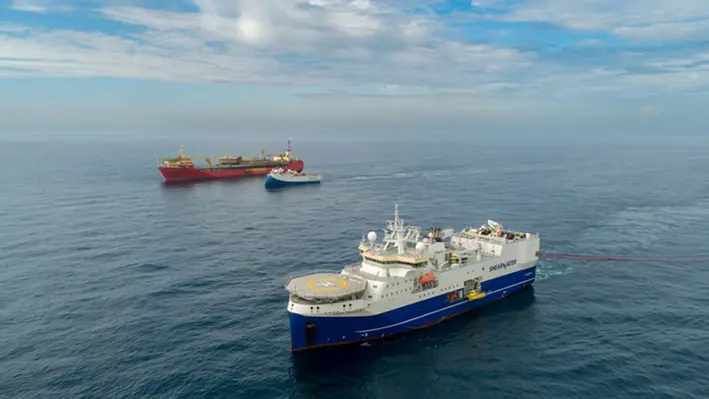

Shearwater GeoServices, a global provider of marine geophysical services, has successfully completed a carbon storage survey project for TotalEnergies.
The survey covers a CO2 geological storage license in the Danish North Sea which was awarded to TotalEnergies in February 2022.
Irene Waage Basili, CEO of Shearwater, commented, “Carbon capture and storage is key to achieving net zero targets and Shearwater is committed to playing its part in enabling this technology to scale. We are pleased to be working with a number of clients on seismic for storage projects. Together with our clients we are learning what this emerging market requires in terms of data. Shearwater brings its extensive operational experience and technology tool kit to this dialogue.
“With each project we expand our understanding and build on our capabilities and experience. We will continue to deploy our expertise and our technology in this emerging market to provide our clients the data they need to make better decisions about their reservoirs.”
The completion of the project marks yet another successful survey the company has conducted within the field, adding to a growing list. In the last two years the company has secured multiple seismic for storage acquisition projects across multiple projects. These have been diverse and require different solutions to achieve the high-resolution imaging needed for evaluating reservoirs for storage application.
Shearwater has successfully utilised hybrid methods with both towed streamers and nodes, new acquisition geometries and worked closely with third party bathymetric service providers for high-resolution data to analyse the seabed and shallow geology in shallow water environments. In addition to acquisition, Shearwater has secured several projects processing and reprocessing data for storage applications.
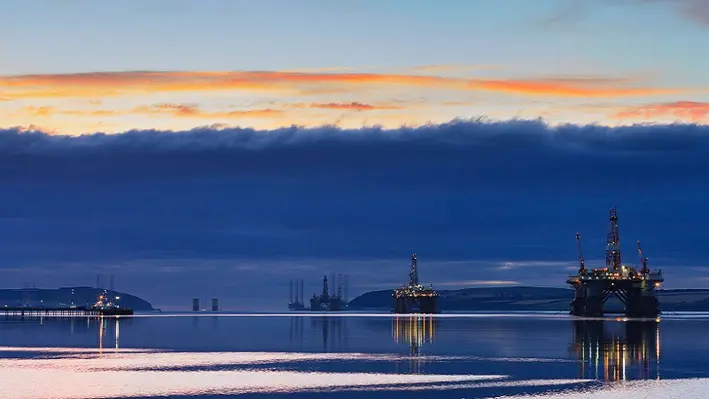

Elemental Energies, an independent wells expert, has won a UK£10mn contract with Archer, a provider of drilling, P&A and well services, to help support a major decommissioning project in the UK North Sea.
As per the agreement, Elemental will provide complete abandonment engineering and operational support across multiple platform wells over three years. To fulfil the contract, Elemental will expand its in-house P&A team with a further 10 roles and these will help make up a multidisciplinary team of onshore and offshore engineers. This team will work alongside Archer personnel to lead abandonment planning and will support the operational activity.
Kenny Dey, Archer UK’s Managing Director, remarked, “The combined capability and experience of the Archer and Elemental Energies engineering team is raising the bar for decommissioning projects of this scale, and we are pleased to be working in partnership with their expert well engineering, operational and project management teams to deliver this major project.”
The first phase of the project will include wireline investigative work and a coiled tubing campaign. Work is already underway for this, alongside engineering of the P&A operations which are set to commence in H2 of 2024 or in 2025.
Mike Adams, Chief Executive Officer of Elemental Energies, surmised, “Our collaboration with Archer is an important milestone as we build on our extensive experience within well decommissioning. By embedding our engineering expertise within Archer we will maximise efficiencies and mitigate risks earlier in the planning and operational phases of the project.
“Efficient and expertly planned well P&A is a cornerstone for successful decommissioning globally and is a critical part of reducing long-term emissions from wells. We are passionate about the role that decommissioning plays in the energy transition, and we are proud to be delivering that alongside our partner Archer.”
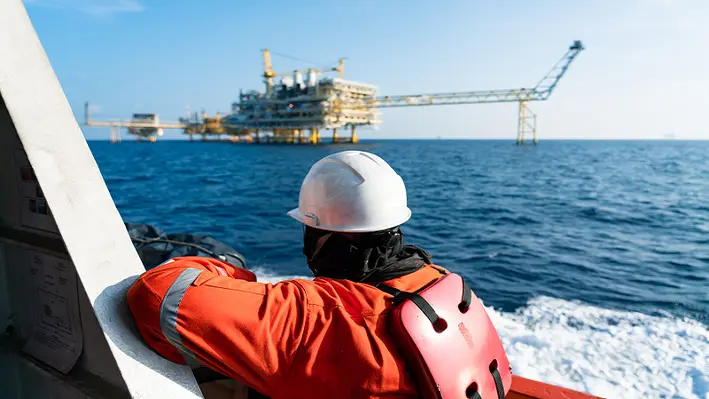

UK well operator, Exceed, is expecting to see record-breaking revenues for the current financial year with an annual revenue of around UK£30mn – 40% of which will be attributed to decarbonisation activity.
The company, which currently acts a well operator for four clients, has grown to become one of the largest independent well and reservoir management specialists and is continuing to highlight the criticality of its capability in leading a sustainable energy transition.
So far, it has decommissioned more than 150 wells and its integrated decommissioning service via LWIV, a rig-based, rig-less and SCV, is also helping to reduce costs as well as the carbon footprint of decommissioning activities. This year, its decommissioning expertise has played a significant role in its clients’ North Sea net-zero strategies, according to the company. Activities in the region includes a six-well plug and abandonment (P&A) campaign and a late-life asset management-decommissioning alliance with a Tier 1 service company. The company has also supported an operator with the development of well access technologies for the decommissioning of complex subsea wells. Not resting on its laurels, the company has also indicated it is preparing to commence a second vessel-based well P&A campaign next month.
In addition to these activities, the company’s subsurface experts have been working in the potential repurpose of the Rough Bravo field for large scale H2 storage and, collaborating with Centrica Energy Storage+, Exceed has provided critical conceptual work and leading geo-mechanic and reservoir modelling in conjunction with a number of universities.
John Anderson, Commercial Director at Exceed, remarked, “Maximising clients’ economic recovery factor plays a critical role in ensuring the sustainable global energy transition to which we are clearly 100% committed. This includes the recent award of two major global well engineering and managed pressure drilling framework agreements, and HPHT and deepwater operations in frontier producing regions, including Namibia, Romania and Guinea Bissau.
“We’re addressing the energy trilemma of security, affordability and sustainable decarbonisation not only through decommissioning, reuse and repurpose, but also through the application of our world-renowned well engineering and drilling capabilities, which follow a strategy to eliminate or reduce each project’s direct emissions where possible.”
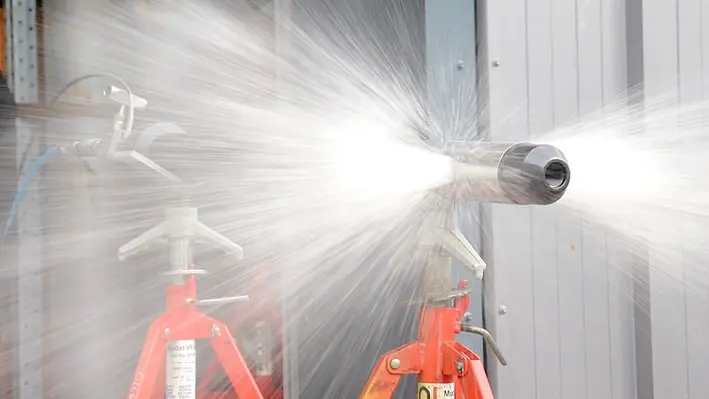
 Oilenco has secured numerous contracts for the supply of plug and abandonment (P&A) tooling packages to operators and decommissioning specialists across Europe.
Oilenco has secured numerous contracts for the supply of plug and abandonment (P&A) tooling packages to operators and decommissioning specialists across Europe.
The packages include the Oilenco pressure wave valve, an intervention-free, open-on-demand equalising device which is set below a plug to aid in creating a barrier by applying pressure in a series of cycles.
Blair McCombie, Operations Director, Oilenco, said, “Since its first installation in 2018, the pressure wave valve has built an extensive run history and as a result has become one of the leading remote opening devices on the market. It can be functioned when required, within a few hours, days, months or even years after installation without the need for dedicated personnel on location, and once open, provides a large through-bore and pump through capabilities without the need for further intervention.
“Oilenco has a proven track record in the UKCS, providing reliable solutions for P&A campaigns. With these recent contract wins and ongoing requests from clients and decommissioning specialists, our solutions are becoming integral to P&A toolkits.”
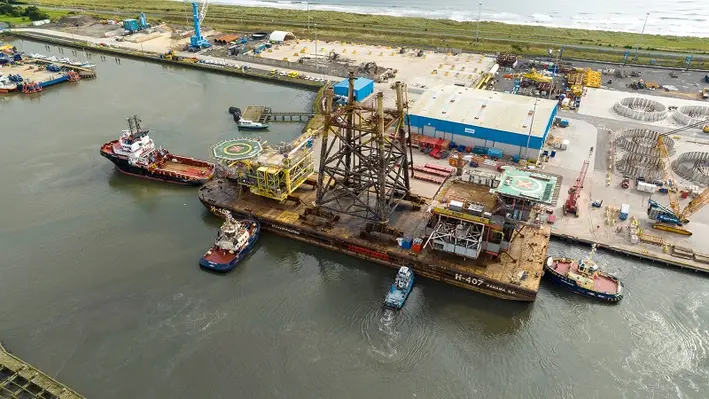

The Port of Blyth, locate between Aberdeen and Great Yarmouth in the UK, working together with Thompsons of Prudhoe, has welcomed 7,000 tonnes of offshore infrastructure to be decommissioned.
Several topsides and jackets for three North Sea offshore oil and gas platforms were delivered to the port’s Battleship Wharf, home to its unique decommissioning facility that is operated in partnership with Thompsons of Prudhoe.
Following arrival, the assets have been successfully removes from two barges and transferred to the decommissioning facility using SPMTs. Here, they were set down onto purpose-built stools ready for demolition. These actions required a number of key contractors such as Mammoet which assisted in the SPTM operations and Harlyn Solutions which provided design and engineering works during the load out. According to the companies, the delivery of the assets is a testament to the advanced handling capabilities boasted by the port as it required exceptional planning and coordination.
Tom Koerner, Operations Director of Thompsons of Prudhoe, remarked, “We are delighted to be given the opportunity to decommission these assets on behalf of our client. This project gives us a strong platform to demonstrate and promote our capabilities to the offshore industry for all future onshore dismantling and waste disposal requirements.”
With the safe delivery successfully completed, Thompsons of Prudhoe will now progress with structural inspection, surveys and make-safe ahead of demolition (which will be carried out by mechanical means and lifting operation). The waste from the assets will be sorted, segregated and (for much of it) recycled.
Martin Lawlor, Chief Executive at Port of Blyth, commented, “By combining the port’s offshore energy cargo-related handling capabilities with Thompsons of Prudhoe’s decommissioning and demolition expertise, customers are able to rely on first-class service based on quality, safety, and performance. We have now established a great track record of successful high-profile decommissioning projects and are looking forward to supporting further decommissioning projects across the offshore energy sector.”
Page 15 of 35
Copyright © 2025 Offshore Network